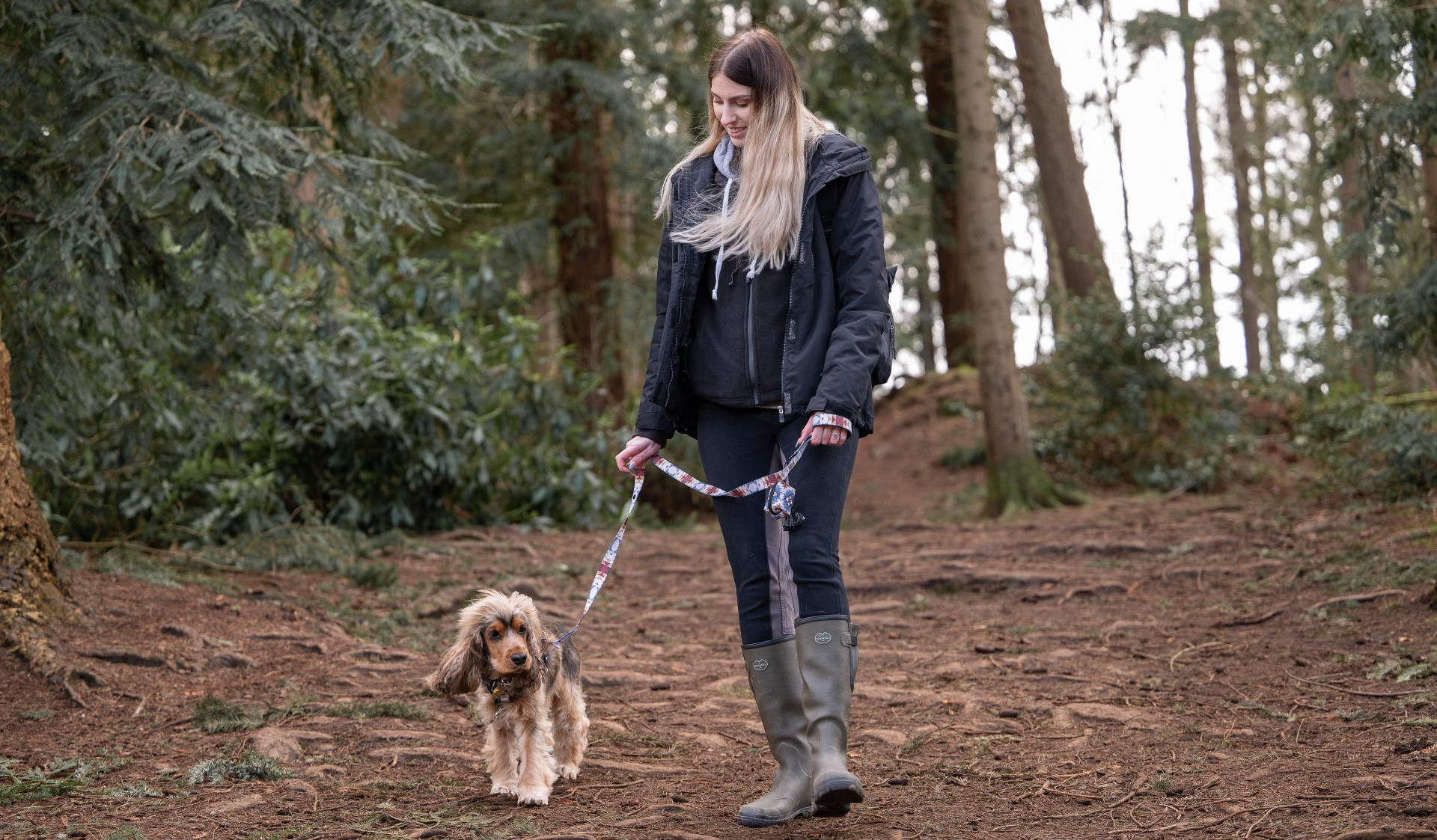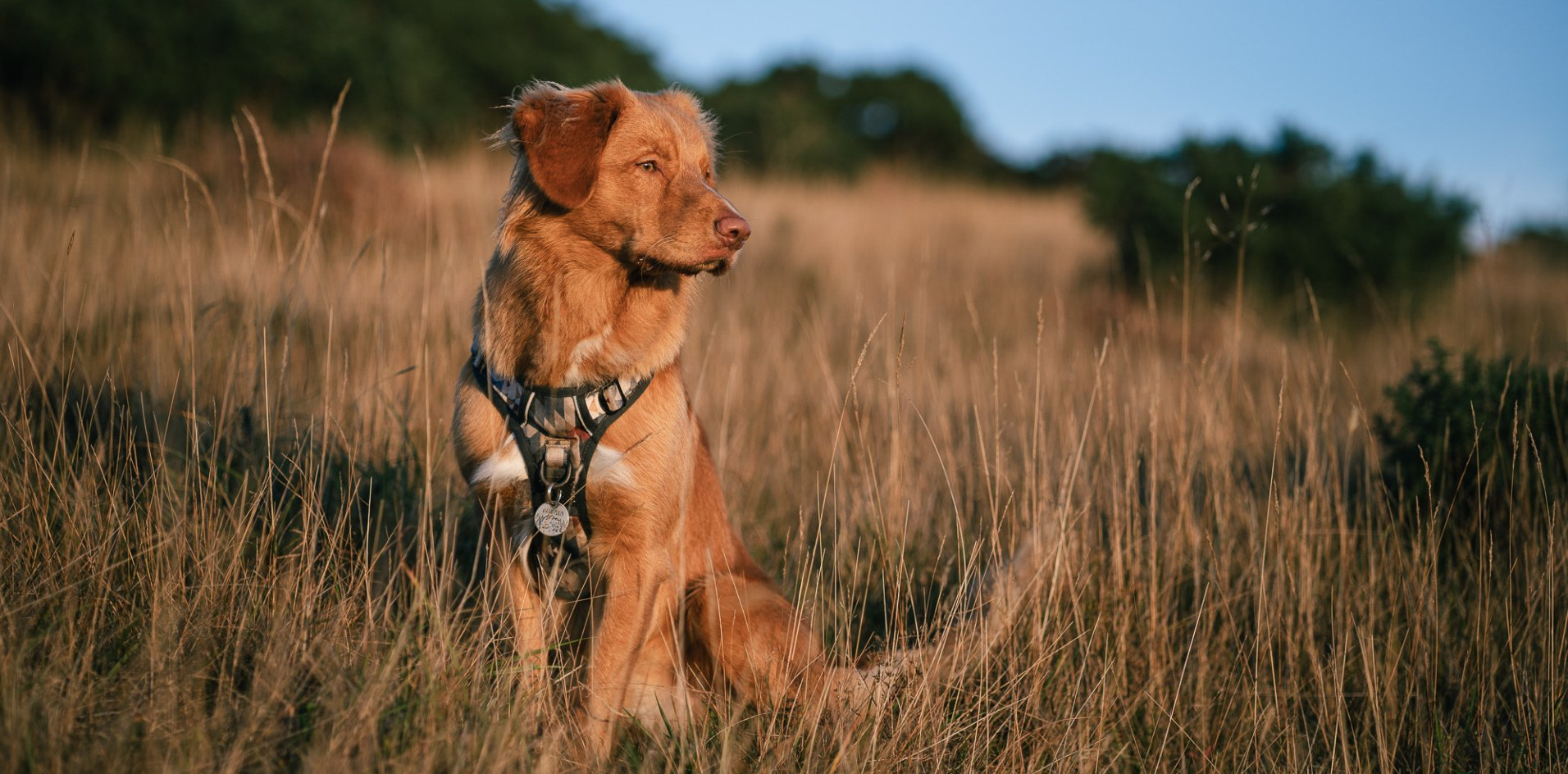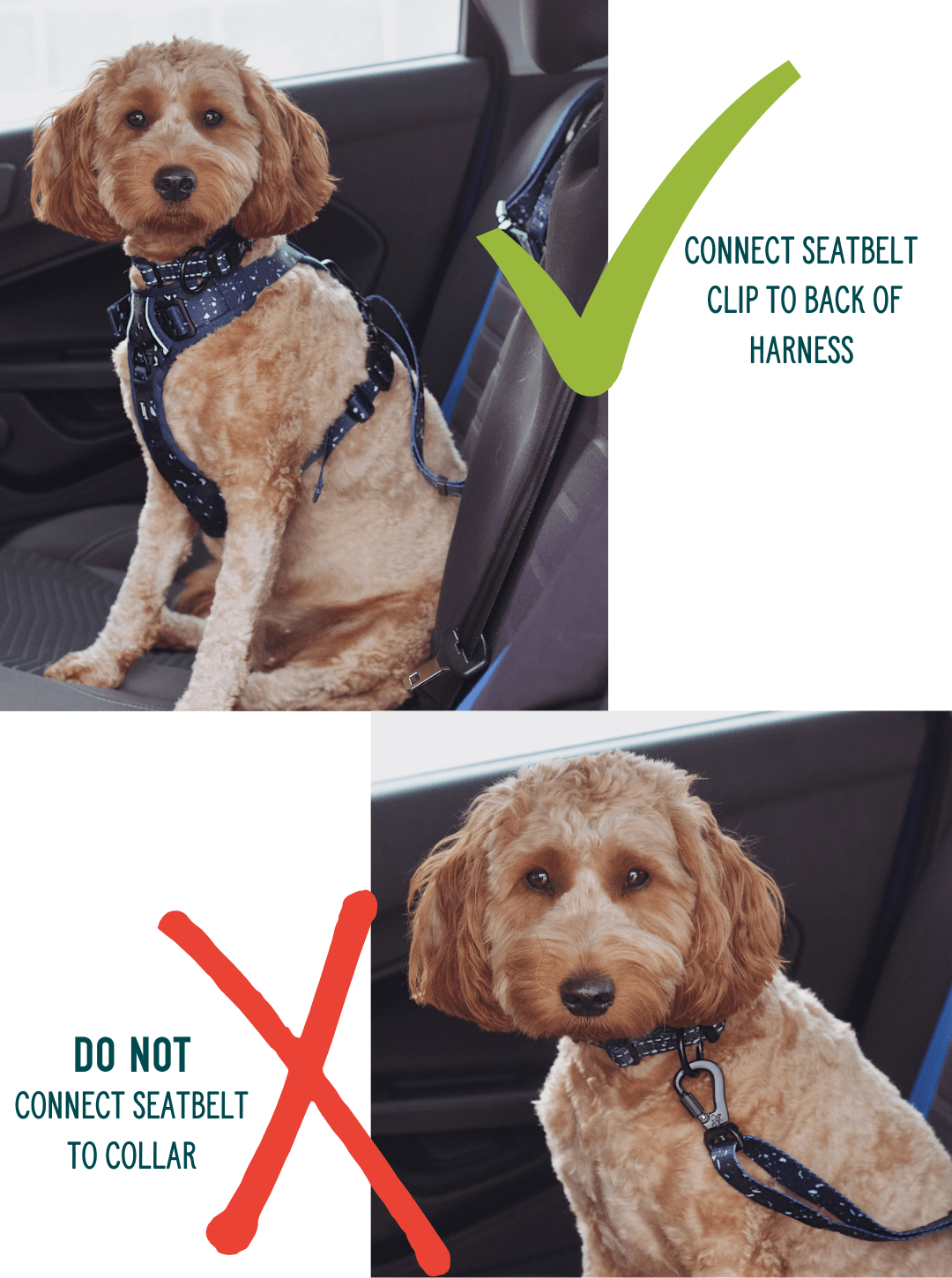A Guide to Dog Laws & Rules in the UK
Walking your dog in public places

Previously referred to as Dog Control Orders (DSOs), now called Public Spaces Protection Orders (PSPOs) are orders that are in place in each area of the UK with specific rules around dog walking in public areas.
We recommend researching and referring to the guidelines in your specific area. Each council is required to have PSPO's for public view on their websites.
While each specific PSPO will differ from place to place across the UK, the orders may require owners to:
- Limit the number of dogs being walked at one time (dog walker's insurance often covers up to a certain amount, however you must still adhere to PSPO in the area)
- Clear up after their dog fouling - not noticing your dog going or not having a poo bag on hand to clean it up with is not considered a reasonable exception to this!
- You may be stopped and asked to prove that you are carrying poo bags if out with your dog - we recommend keeping some on hand always, in your dog walking bag or a poo bag holder clipped onto you, your dog, or your lead, just incase)
- Keep dogs on lead, and follow instruction if asked to do so by police officers, support officers or council members
- Prevent dogs from entering specific public locations such as children's play areas or farmland
Under the regulations laid out in these orders, dog owner's found to be breaking these laws can be issued fines:
- Fixed penalty notice: £100 on the spot
- Taken to court, and fined up to £1000
Road Traffic Act
Section 27 of the Road Traffic Act outlines the rules for walking your dog on public roads. Under this act, a person who is found to be walking their dog without a lead on a designated road could be guilty of an offence.
In this context, a "designated road" means a length of road specified by an order in that behalf of the local authority in whose area the length of road is situated.
As previously mentioned, different council authorities have different rules regarding this based on the local PSPOs, so it is important to check the specific roads in your local area for a clear understanding of this rule in your area!
The Countryside Code
This code is a guide created to help visitors be respectful when visiting UK parks, waterways, coasts and countrysides.
There are some rules that apply specifically to dog owner's:
- always keep dogs under control and in sight
- dog poo - bag it and bin it - any public waste bin will do
- always keep a dog on a lead or be confident in the dog's recall abilities
- making sure a dog doesn't stroll from the path or area where you have right of access
- always check signage - some places may only allow dogs on lead regardless of recall, and some may ban dog's all together (with the exception of assistance dogs)
- let your dog off lead if you feel threatened by livestock or horses - releasing your dog will make it easier for you both to reach safety

Livestock Protection
The countryside code advises that it is good practice to always keep your dog on a lead around livestock, though if the dog is under control this is not a must, just good practice.
On Open Access land you must keep your dog on a lead around livestock anytime, and between March 1st and July 31st on Open Access land you must keep your dog on a lead at all times, regardless of whether you can see any livestock. These are legal requirements.
The most essential part of information here regarding livestock protection is under section 9 of the Animals Act 1971 and Protection of Livestock Act 1953: "A farmer can shoot a dog that is attacking or chasing livestock. They may not be liable to compensate the dog's owner"
If your dog is highly stimulated around livestock and would chase or attack livestock when given the chance, here at Twiggy Tags we recommend ensuring that anytime your dog is around livestock you choose a strength-tested harness and a strength-tested and lockable lead, to ensure there is no risk to your dog's life from the failure of your dog's walking gear!
Read more about the Countryside Code!
A pet owner's duty of care

Under the Animal Welfare Act 2006, if an animal's 5 basic needs are not met, dog owner's could be prosecuted for animal cruelty. The word 'cruelty' in this legal sense refers to causing an animal unnecessary suffering.
When we think of animal cruelty, we usually think of deliberate harm to an animal, but neglect of a pet and failing to meet their most basic welfare needs is also legally considered animal cruelty.
Here in the UK, all domestic animals and pets have the legal right to:
- Live in a suitable environment
- Eat a suitable diet
- Exhibit normal behaviour patterns
- Be housed with, or apart from, other animals
- Be protected from pain, suffering, injury and disease
Under the Animal Welfare Act 2006, dog owner's who are found to be neglecting these 5 basic needs could face:
- A prison sentence up to 51 weeks
- Their dog being taken away
- A fine of up to £20,000
- Being prevented from owning any future animals
We know being a new dog owner can be a little daunting sometimes. If you are here reading this article, we know how unlikely it is you are deliberately causing harm to your furry friend, but if you wanted to have more of an in-depth read about the 5 basic needs and make sure you are fulfilling these for your pooch, you can read the full Code of Practice for the Welfare of Dogs. This talks about finding a suitable diet, ensuring the environment your dog lives in is suitable and has a more in-depth dive on healthy weight, companionship requirements and how to keep your dog healthy!
Finn's Law
The Animal Welfare (Service Animals) - nicknamed Finn's Law - was introduced in 2019 by Sir Oliver Heald MP to make it an offence to cause unnecessary suffering to a service animal.
In 2016 German Shepherd Finn, a police dog, was stabbed and seriously hurt protecting his handler PC Dave Wardell from an attacker. Finn was stabbed in the chest and head saving his handler's life during the attack from a robbery suspect and was not expected to survive the attack.
Under the previous law, the attack on Finn could only legally be charged as criminal damage. The new law now protects service animals, such as police dogs and horses, and prevents those who attack or injure them from being able to claim self-defence.

Driving with dogs!

Under the Highway Code, which was published in 2015 and updated in March 2022, there are certain rules laid out around dog owner's with cars to do with driving with dogs and accidents when walking a dog!
Dog owner's should be aware of the two rules:
- Rule 56: Do not let a dog out on a road on its own. Keep it on a short lead when walking on the pavement, road or path shared with cyclists or horse riders.
- Rule 57: When in a vehicle, make sure dogs or other animals are suitably restrained so they cannot distract you while you are driving or injure you, or themselves, if you stop quickly. A seat belt harness, pet carrier, dog cage or dog guard are ways of restraining animals in cars.
Although not a legal rule, here at TT we strongly advise only attaching any dog car restraints directly to your dog's harness, and not their collar. In the event of harsh braking, or the unlikely event of a minor accident, a harsh stop could hurt your dog if the seatbelt is linked to the collar. Please see our guide below!

Road Traffic Act
The Road Traffic Act, section 170 states that any driver who injures a dog with a car, motorbike or other vehicle type must provide their name and address to the dog owner or the person in charge of the dog at the time.
In the event that no one is accompanying the dog at the time of the accident, the driver is required to report the accident directly to the police within 24 hours of the incident happening.
Under this act, failure to stop or report is an offence and could result in:
- penalty points on your driving license between 5-10
- a fine up to £5000
For more details please read the legislation here
Controlling your dog and keeping other's safe!
It is against the law for your dog to be dangerously out of control anywhere. This includes public and private land as well as in the owner's home. This law applies to all dogs.
A dog is considered "dangerously out of control" if it:
- injures someone
- makes someone worried it might injure them
and a dog could be decided by a court to be "dangerously out of control" if it:
- attacks someone's animal
- the owner of an animal thinks they could be injured if they tried to stop your dog attacking their animal
Having a dangerously out of control dog can be punished by:
- an unlimited fine
- prison time (up to 6 months)
- both of the above
- your dog being destroyed
- being banned from owning animals
If you let your dog injure someone you can be punished by all of the above but with a prison sentencing of up to 5 years. If this is done deliberately, you could be charged with "malicious wounding."
If you allow your dog to kill someone, you can punished by all of the above but with a prison sentence of up to 14 years.
If you allow your dog to injure an assistance dog, you can receive an unlimited fine and be sent to prison for up to 3 years.
Read more: Controlling your dog in public
Owning 'banned dogs'

There are four types of dog which it is against the law to own in the UK:
- Pit Bull Terrier
- Japanese Tosa
- Dogo Argentino
- Fila Brasileiro
It is also against the law to
- sell a banned dog
- abandon a banned dog
- give away a banned dog
- breed from a banned dog
The reason the word "type" is used rather than "breed" is because whether your dog is a banned type of dog or not depends on what your dog looks like rather than its breed, name or lineage. An example of this is that if your breed matches characteristics of a Pit Bull Terrier, it could be considered a banned dog regardless of the breed.
The local council have the right to seize a banned dog even if it has not behaved dangerously or there have been no complaints. The police would need a warrant if your dog is in a private place, but do not if your dog is in a public place.
Getting your banned dog exempted
If your dog is seized, depending on its behaviour it may be released back to your or held in a kennel with no visitation. A dog owner will not be forced to give up ownership, but if they should decide to, the dog may be destroyed before even going to court.
In the event of owning a banned dog wherein the court agrees it is not a danger to the public, it may be put on the Index of Exempted Dogs (IED) and you will be allowed to keep the dog under certain restrictions. If your dog is exempted, an owner will need to follow certain rules to maintain ownership of the dog:
- neuter and microchip their dog
- keep their dog on a lead and muzzled in public
- kept in a secure place
- take out insurance against your dog injuring other people
- show the Certificate of Exemption when asked or within 5 days of being asked
- update the IED with any changes of address
Full information about owning banned dogs can be found here
We wanted to mention the controversy around the Breed Specific Legislation (BSL) in UK by the dog community. There have been many arguments and petitions over the years to have this legislation changed so that a banned dog can be judged by its behaviour, rather than its appearance only. Please follow this link to read about Loved Lola, the Staffordshire Bull Terrier forced into a life on lead and muzzled due to her size and at a risk of euthanasia if her owner doesn't comply, despite no dangerous behaviour. Here is another link from the Blue Cross who are also campaigning to end BSL.
Breeding, puppies & strays!

In England and Wales, it is illegal to sell puppies under 8 weeks old! This is a crucial time for puppies to be with their mother and littermates and start learning how to become a dog!
Lucy's Law
Lucy's Law is a new legislation added to the Animal Welfare Regulations 2018. Named after Lucy, a Cavalier King Charles Spaniel who was rescued from a puppy farm where she was subjected to terrible conditions. Lucy's Law is a requirement that puppies under 6 months old can only be sold by a licensed breeder, and the breeder is required to show evidence of the puppies interacting with their mother.
The penalties for a business selling puppies or kittens without a license is:
- unlimited fine
- prison sentence up to 6 months
Lucy's Law is often considered the first step in the fight against puppy farming.
Environmental Protection Act 1990
Under this act, any person who finds a stray dog has the obligation to:
- make an attempt to reunite them with their owner
- report the dog to the dog warden
In England and Wales, the police are not responsible for strays. Some rescue centres will take in stray/found dogs until they reunited with their owners, however the first step should always be to contact the dog warden. If you find a stray dog and do not contact the dog warden, you could be accused of theft.
Microchipping and Doggy ID
Microchipping Laws
In England it is a legal requirement for all dogs to be microchipped and for their details to be registered and kept up to date on a microchip database.
Under microchipping laws established in 2016, any owener who's dog is found by police to not have a microchip will be given a short period of time to rectify, and after that could receive a penalty fine up to £500.
Click here for more information about microchipping your dog
ID collar and tag

Under the Control of Dogs Order 1992, in addition to microchipping, it is the law that a dog must be wearing a dog collar and identification tag when out in public.
The ID tag must display:
- The name of the dog owner (initials and surname)
- An up-to-date address of the owner (minimum house number and postcode)
It is not a legal requirement to display a phone number, however it is strongly advised as this would be the quickest way to reunite owner and dog in the event that a dog does become lost.
As dog owners ourselves here at TT, there are some laws that we couldn't be more grateful for, and some that we don't completely agree with. But, ultimately, the law is the law and it's something all dog owners in the UK need to comply with for the safety of themselves and their pooch!
Let us know your thoughts over on our Instagram post!



Leave a comment